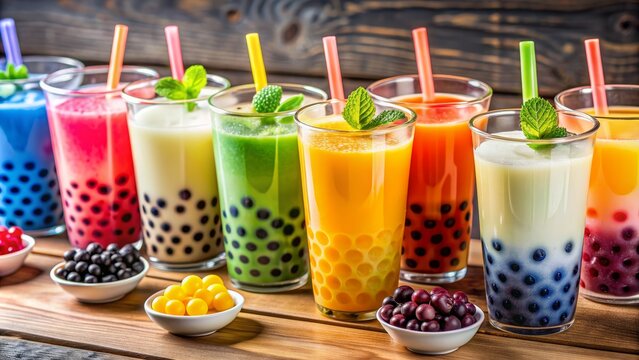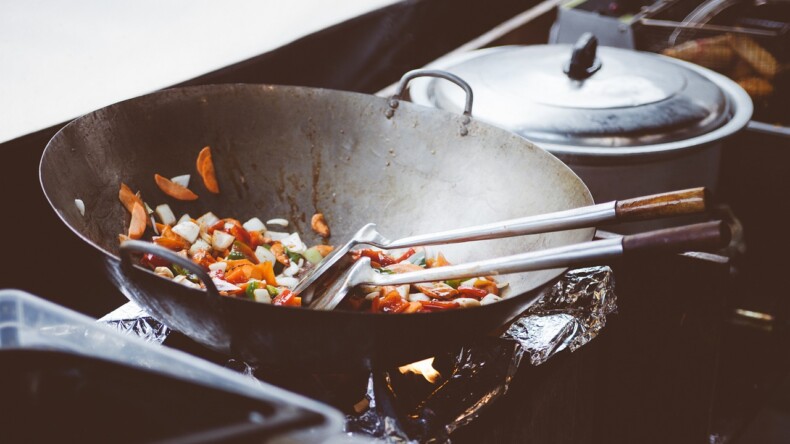The Fascinating World of Boba Tea: A Sip of Culture and Flavor
Boba tea, also known as bubble tea, has become a global sensation in recent years, captivating people with its unique combination of flavors, textures, and cultural significance. Whether you’re sipping it through a thick straw at a trendy café or enjoying it in the comfort of your own home, Boba tea offers a refreshing experience that’s hard to beat. But beyond its fun and flavor, Boba tea is also a drink that tells a story—one of cultural exchange, creativity, and innovation. In this blog, we’ll explore the origins of Boba tea, its diverse varieties, the health benefits it offers, and why it has become a beloved drink around the world.
What is Boba Tea?
Boba tea is a refreshing, customizable beverage originating from Taiwan, made by combining tea (typically black, green, or oolong) with chewy tapioca pearls, milk (or fruit juice), and sweeteners. The drink is served cold and is known for its fun, interactive experience, where you drink through a thick straw that allows you to suck up both the liquid and the chewy pearls. Often, Boba tea is customized with various flavors, toppings, and even the sweetness level, allowing for a personalized experience with each cup.
The History and Evolution of Boba Tea
Boba tea has a fascinating history that dates back to the 1980s in Taiwan, where it was invented by Lin Hsiu Hui, a tea shop owner. The story goes that Lin wanted to create something new and exciting for his customers, so he began experimenting with adding tapioca pearls—small, chewy balls made from cassava root—into traditional milk tea. The combination of sweet tea and chewy pearls was a hit, and soon other tea shops began offering their own variations of the drink.
From Taiwan, Boba tea spread across Asia, making its way to places like Hong Kong, Japan, and South Korea. In the 1990s, the drink began to gain international attention, especially in the United States, where it became a popular trend among young people. The appeal of Boba tea lies not only in its delicious flavors but also in the fun and interactive nature of drinking it, as customers are often seen shaking the drink and watching the pearls bounce around in the cup before sipping.
Today, Boba tea shops can be found in nearly every major city worldwide, from Los Angeles to London, and the drink has evolved into countless variations, from fruity teas to vegan-friendly options, making it accessible to people from all walks of life.
Key Ingredients in Boba Tea
At the heart of every Boba tea is its base—tea. The tea can be brewed from various types of leaves, with black tea being the most common choice. Green tea, oolong tea, and even herbal teas are also popular bases for Boba tea. The tea provides the foundation for the drink, delivering flavor and aroma.
Another essential ingredient in Boba tea is the chewy tapioca pearls, also known as boba. These pearls are made from tapioca starch, which is derived from the cassava root. When cooked, the pearls take on a chewy, gelatinous texture that contrasts beautifully with the smooth tea, creating an enjoyable drinking experience. These pearls are typically sweetened with sugar or syrup to enhance their flavor.
Milk or fruit juice is often added to the tea, turning it into a creamy or refreshing beverage. For traditional Boba tea, milk is used, but for those seeking dairy-free alternatives, options like almond milk, soy milk, or coconut milk are commonly available. Fruit-based Boba teas, also known as “fruit teas,” replace the milk with juices from fruits like mango, strawberry, or passion fruit, creating a tangy and sweet drink.
Sweeteners, such as sugar, honey, or syrup, are added to enhance the flavor, and some shops even allow customers to customize the sweetness level to their preference. Additional toppings, such as fruit popping pearls, coconut jelly, or aloe vera, can be added to further enhance the flavor and texture of the drink.
Boba Tea Varieties
Boba tea comes in many different forms, allowing for endless customization. While the classic milk tea with tapioca pearls remains the most popular option, here are some other variations that you can enjoy:
- Traditional Milk Tea: This is the original Boba tea, made with black or green tea, milk, and chewy tapioca pearls. It’s rich, creamy, and flavorful, and it’s the go-to drink for many Boba tea lovers.
- Fruit Tea: For those who prefer a lighter, fruitier taste, fruit tea is an excellent choice. These drinks are made by combining fresh fruit juices with tea and tapioca pearls. Popular flavors include mango, strawberry, and passion fruit.
- Smoothies and Slushes: If you’re in the mood for something cold and thick, smoothies and slush-style Boba teas are perfect. These drinks use blended fruits and ice to create a smooth, icy drink with the chewy tapioca pearls.
- Toppings: Boba tea isn’t limited to just tapioca pearls. Many Boba tea shops offer a variety of toppings that can be added to the drink, such as coconut jelly, aloe vera, pudding, or even cheese foam. These toppings add additional flavor, texture, and fun to the drink.
- Vegan Boba Tea: For those who prefer a plant-based diet, vegan Boba tea options are available. These drinks use dairy-free milks, such as almond or oat milk, and often substitute honey with agave syrup or other plant-based sweeteners. Vegan Boba tea is a great choice for those looking for a cruelty-free or lactose-free option.
Health Benefits and Considerations
While Boba tea is often enjoyed as a sweet treat, it does offer some health benefits, thanks to its key ingredients.
- Antioxidants from Tea: The tea used in Boba tea is rich in antioxidants, particularly polyphenols, which have been shown to reduce inflammation, improve heart health, and fight oxidative stress. Drinking Boba tea made with black or green tea provides a dose of these beneficial antioxidants.
- Potential Digestive Benefits: Tapioca pearls are made from cassava, which is a good source of fiber. Fiber plays an essential role in digestion by promoting regular bowel movements and preventing constipation. Additionally, fiber supports gut health by feeding beneficial gut bacteria, which can improve overall digestive function.
- Customizable Sweetness Levels: One of the unique features of Boba tea is the ability to control the sweetness level. Many Boba shops allow customers to choose how much sugar or syrup is added to their drink. By reducing the sweetness, you can make the drink a healthier option, lowering your calorie intake.
- Energy Boost: Tea itself contains caffeine, which can provide a gentle energy boost, especially if you opt for black or green tea as the base for your Boba tea. The caffeine content can help increase alertness, focus, and even boost metabolism.
However, it’s important to note that Boba tea can also be high in sugar and calories, especially when topped with extra sweeteners or sugary syrups. Consuming it in moderation and customizing the drink to suit your health needs can help you enjoy the benefits of Boba tea without overindulging in excess sugar.
Boba Tea Culture: More Than Just a Drink
Boba tea is not just a beverage—it’s a cultural phenomenon. In Taiwan, where the drink originated, Boba tea is an integral part of daily life. It’s common for people to stop by Boba tea shops on their way to work or school, or to enjoy it while hanging out with friends. The experience of sipping Boba tea is often seen as a social activity, bringing people together to bond over a delicious and interactive drink.
The rise of Boba tea shops worldwide has contributed to a growing global culture surrounding the drink. In cities like Los Angeles, New York, and London, Boba tea shops have become trendy hangouts, attracting young people looking to relax, chat, and take photos of their colorful drinks. The visually appealing nature of Boba tea, with its vibrant colors and fun textures, has made it a favorite on social media platforms like Instagram and TikTok, further fueling its global popularity.
Why is Boba Tea So Popular?
Boba tea’s popularity can be attributed to several key factors:
- Unique Flavor and Texture: The combination of tea, milk, and chewy tapioca pearls creates a one-of-a-kind drinking experience that appeals to people looking for something different. The chewy texture of the pearls adds an element of fun, making it a unique and enjoyable treat.
- Customizability: Boba tea is highly customizable, allowing customers to tailor the drink to their taste preferences. From choosing the type of tea and milk to selecting the level of sweetness and toppings, Boba tea offers a personalized experience that can be as simple or as adventurous as you like.
- Social Media Appeal: Boba tea has a visually striking appearance, making it perfect for sharing on social media. The drink’s colorful and eye-catching nature has made it a favorite for Instagram and TikTok posts, helping spread its popularity worldwide.
- Cultural Fusion: Boba tea blends elements of tea culture with the fun and creativity of modern food trends. It’s a drink that draws from Taiwan’s rich tea traditions while also embracing new and exciting flavors from around the world, making it appealing to a diverse range of people.
Conclusion
Boba tea has come a long way since its humble beginnings in Taiwan, evolving into a global sensation that has captured the hearts of people from all walks of life. With its delicious flavor, customizable options, and interactive experience, Boba tea is more than just a drink—it’s a cultural phenomenon that brings people together and encourages creativity. Whether you’re a longtime fan or a first-time drinker, there’s no denying that Boba tea offers a refreshing, fun, and flavorful experience that’s hard to resist. So, the next time you’re in the mood for a tasty beverage, grab a cup of Boba tea and enjoy a sip of culture and flavor.



